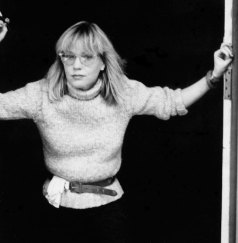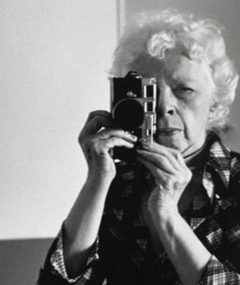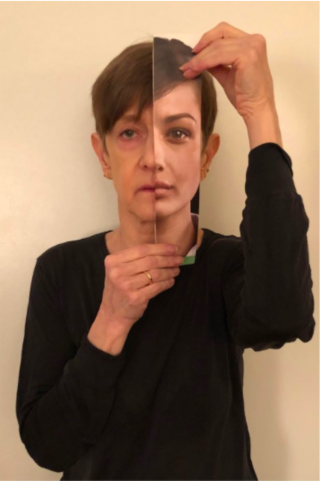
Berenice Alice Abbott was an American photographer best known for her portraits of cultural figures of the interwar period, New York City photographs of architecture and urban design of the 1930s, and science interpretation of the 1940s to the 1960s.

Sarah Edwards Charlesworth was an American conceptual artist and photographer. She is considered part of The Pictures Generation, a loose-knit group of artists working in New York in the late 1970s and early 1980s, all of whom were concerned with how images shape our everyday lives and society as a whole.
Laura McPhee is an American photographer known for making detailed large-format photographs of the cultural landscape—images which raise questions about human impacts on the environment and the nature of our complex and contested relationship to the earth.

Lisette Model was an Austrian-born American photographer primarily known for the frank humanism of her street photography.
Kunié Sugiura is a Japanese photographer, painter, and multimedia artist. Her chosen medium is the photogram.
Coreen Simpson is a noted African-American photographer and jewelry designer, whose work has an African-American theme.

Judith Henry is a New York-based artist that creates multimedia art works exploring interior versus public self. Henry often uses newspapers, telephone books, and film reels. She also uses snapshot photography. After graduating from college, she moved to New York and married artist Jaime Davidovich, with whom she has two daughters. She currently lives in Williamsburg, Brooklyn.
David Graham is an American artist photographer and professor at the University of the Arts in Philadelphia. He currently lives and works in De Pere, Wisconsin. Embracing popular forms of American photography, David Graham explores contemporary culture through the idiosyncratic nature of the American landscape. His work is in many collections, including the Museum of Modern Art, New York City; the San Francisco Museum of Modern Art; the Art Institute of Chicago; the Philadelphia Museum of Art; the George Eastman House, Rochester, New York; the International Center of Photography, New York City; and the Brooklyn Museum, New York. He is represented by the Laurence Miller Gallery in New York City, Etherton Gallery in Tucson, Arizona, and the PDNB Gallery in Dallas, Texas.

Alice Boughton was an early 20th-century American photographer known for her photographs of many literary and theatrical figures of her time. She was a Fellow of Alfred Stieglitz's Photo-Secession, a circle of photographers whose artistic efforts succeeded in raising photography to a fine art form.
W.M. Hunt is a photography collector, curator and consultant who lives and works in New York.

Penelope Umbrico is an American artist best known for her work that appropriates images found using search engines and picture sharing websites.
Anthony Barboza is a photographer, historian, artist and writer. With roots originating from Cape Verde, and work that began in commercial art more than forty years ago, Barboza's artistic talents and successful career helped him to cross over and pursue his passions in the fine arts where he continues to contribute to the American art scene.

Sarah Hasted is an American curator and art dealer. Hasted was the founder and co-owner of contemporary art galleries, Hasted Hunt and Hasted Kraeutler, and has been a curator and art dealer for over 25 years. She has consulted for private collectors, and placed works of art with major Museums as well as corporate collections worldwide. Hasted has also been an adjunct professor at Parson's School of Design since 2003. In January 2017, Hasted was elected President of the Board of a not for profit organization, Moving Mountains Theater Company], founded by actor Jamie Hector from The Wire.
Vera Lutter is a German artist based in New York City. She works with several forms of digital media, including photography, projections, and video-sound installations. Through a multitude of processes, Lutter's oeuvre focuses on light and its ability to articulate the passing time and movement within a tangible image.

Rebecca Norris Webb is an American photographer. Originally a poet, her books often combine text and images. An NEA grant recipient, she has work in the collections of the Museum of Fine Arts, Boston, and The Cleveland Museum of Art. Her photographs have appeared in The New Yorker, The New York Times Magazine, Le Monde, and other magazines. She sometimes collaborates with photographer Alex Webb, her husband and creative partner.
Barbara Crane was an American artist photographer born in Chicago, Illinois. Crane worked with a variety of materials including Polaroid, gelatin silver, and platinum prints among others. She was known for her experimental and innovative work that challenges the straight photograph by incorporating sequencing, layered negatives, and repeated frames. Naomi Rosenblum notes that Crane "pioneered the use of repetition to convey the mechanical character of much of contemporary life, even in its recreational aspects."
Sage Sohier is an American photographer and educator.
Frank Maresca is an American dealer of contemporary, self-taught, outsider and 20th-century art. He is a co-founder of Ricco/Maresca Gallery in New York City.
Betty Hahn is an American photographer known for working in alternative and early photographic processes. She completed both her BFA (1963) and MFA (1966) at Indiana University. Initially, Hahn worked in other two-dimensional art mediums before focusing on photography in graduate school. She is well-recognized due to her experimentation with experimental photographic methods which incorporate different forms of media. By transcending traditional concepts of photography, Hahn challenges the viewer not only to assess the content of the image, but also to contemplate the photographic object itself.
Gerald Slota is an American artist and photographer who has been widely exhibited in the United States and internationally. Slota is represented by the Ricco/Maresca Gallery in New York City and the Robert Berman Gallery in Los Angeles. He is known for a deconstructed style of working with his own or found photographs and drawing, cutting, and transforming the images.








